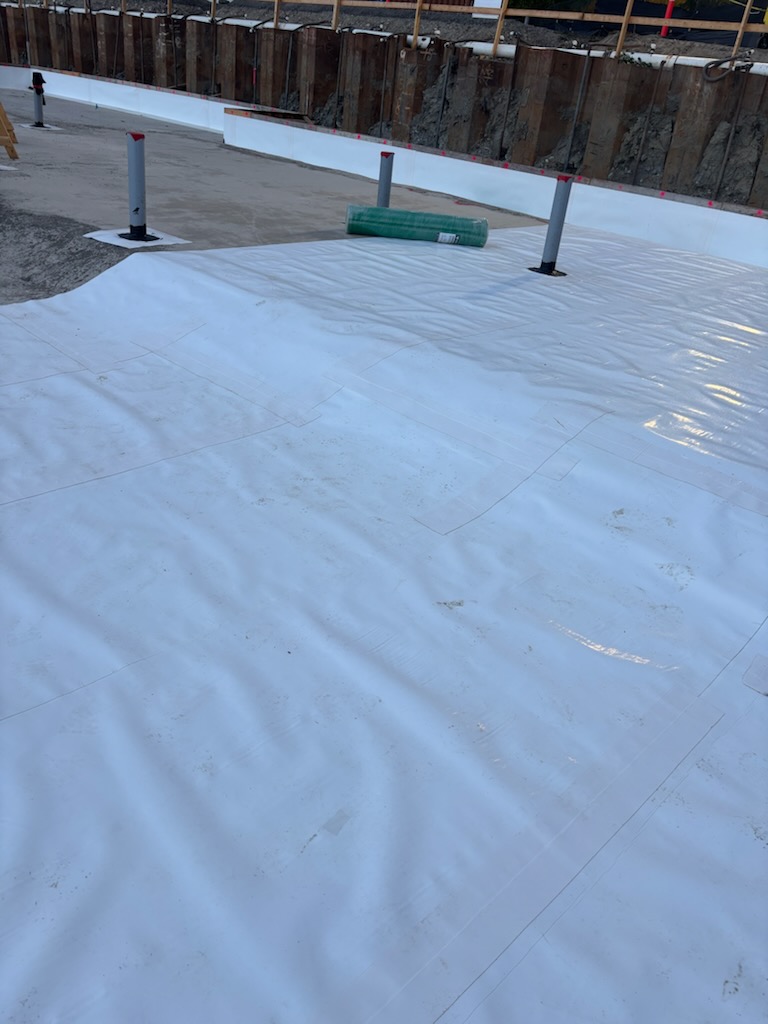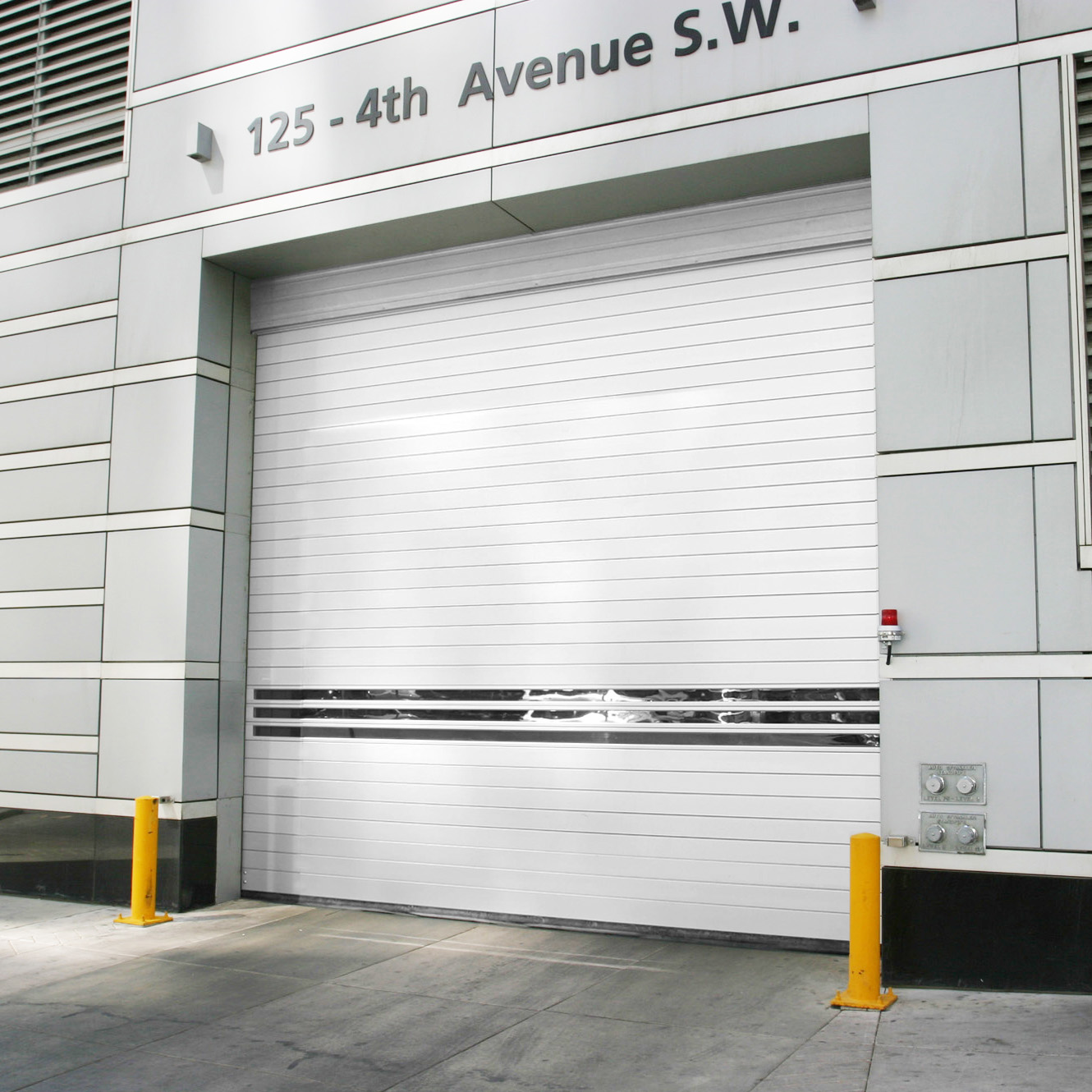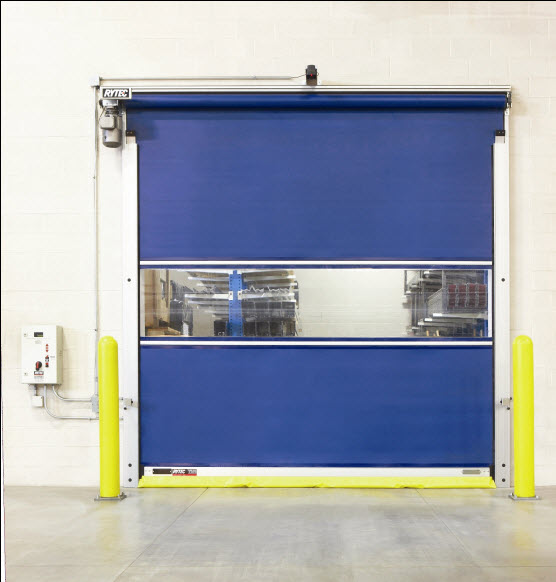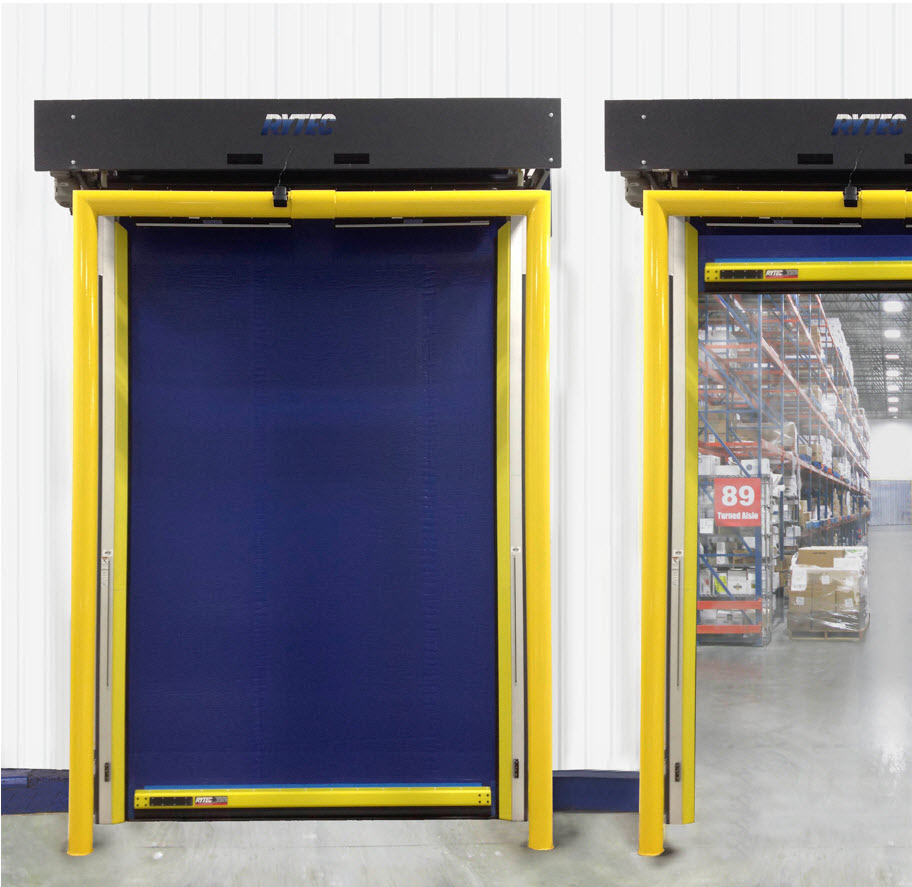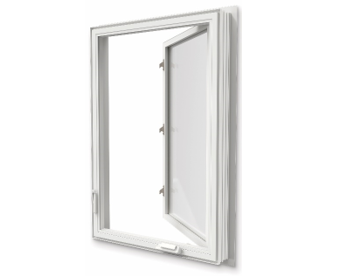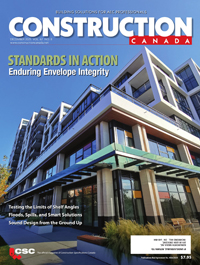Doorway to learning: Continuing education courses open access to expertise

Commercial architecture is constantly evolving, requiring industry professionals to invest in keeping up with engineering, material technology, and product advances. Continuing education units (CEUs), including those offered by manufacturers, play a key role in this process. Online, on-demand, and often cost-free, commercial supplier-designed CEUs can teach architects about the latest innovations that contribute to meeting building codes and best practice standards while helping satisfy continuing education requirements. Architects can align CEU offerings from technical partners with their professional interests to sharpen their skills and apply new knowledge directly to their work—a critical step in bridging the gap between theory and real-world application.
CEU course examples and benefits

To illustrate the types of information and CEU courses architects can access in this way, consider commercial door products. For example, by partnering with a commercial door supplier, architects can expand their expertise through courses focused on security, disaster resilience, code compliance, and architectural materials. The following examples highlight current commercial door CEU courses and their benefits to architects.
Security and designing for preparedness

This course explores how architects and design professionals can integrate door security solutions into multi-use buildings without compromising esthetics. Participants will learn to identify vulnerable access points and apply design strategies that meet safety and security requirements, including protection against theft, vandalism, severe weather, and fire. The courses also examine the role of visible security as a deterrent and the strategic use of concealed security features to maintain performance and design integrity.
Rolling and sectional door closures
Architects will gain insight into the functionality and diverse applications of rolling and sectional doors across commercial building types. The content explores the importance of designing for airflow and indoor/outdoor flexibility—especially in response to evolving health and safety considerations—while maintaining a strong focus on security. Architects will learn how to incorporate these door solutions without interfering with overhead mechanical, electrical, or plumbing systems and how to eliminate unnecessary overhead distractions in ceiling spaces. The courses also highlight common unprotected areas in commercial and hospitality settings and identify opportunities where rolling and sectional closures can enhance safety and operational efficiency.
Providing hurricane protection with rolling doors

As extreme weather events become more frequent, designing for disaster resilience is more crucial than ever. This course covers key considerations for selecting commercial doors and openings that comply with wind and storm-related codes. Objectives include exploring the differences between “Test” and “Design” load requirements and the variables that influence design wind loads. Courses also cover construction considerations for high wind load doors, how wind forces are transferred to building structures, and how closed doors behave during extreme weather events. Additional topics include evolving code requirements for wind load and windborne debris resistance and the potential consequences of commercial door failure during severe storms.
Meeting building envelope code requirements with coiling doors
Staying compliant with evolving building codes is essential for architects involved in the design of commercial structures. This program examines energy and wind load code requirements relevant to coiling door systems, focusing on compliance and performance. Objectives include exploring key energy performance metrics related to rolling door systems, including R-value, U-value, U-factor, and air leakage. These courses also examine the variables that influence design wind loads, how wind forces are transferred from doors to the building structure, and how different door specifications can impact energy efficiency and code compliance.
Cast iron architecture

This CEU course examines the historical significance of cast iron as a building material and its lasting impact on architectural design, particularly in urban environments. Participants will explore the material’s rise during the Industrial Revolution, its advantages and limitations compared to steel and other structural options, and its role in shaping 19th-century architectural styles. The course also delves into how architects and engineers today are preserving, restoring, and adapting cast iron structures for modern use. Real-world project examples illustrate restoration techniques and highlight the continued relevance of cast iron in adaptive reuse and heritage conservation efforts.
A wide range of CEU courses are available to support architects in exploring modern commercial door design and performance considerations. Commercial doors represent just one area where CEU content can deepen expertise—similar opportunities exist across many building product categories. By participating in manufacturer-offered CEU courses like these, architects can easily connect their interests and theoretical knowledge with practical implementation.
Manufacturer-offered CEUs: What to look for
For commercial architects interested in earning CEU credits from manufacturer-developed education platforms, some features to look for in a high-quality program include:
Online, on-demand access
Digital spaces that offer flexible, on-demand access to courses let architects learn at their own pace and on their schedule from anywhere. This convenience helps busy professionals stay current on new building materials, industry regulations, and technological innovations without disrupting project timelines.
Live presentations and webinars
In-person presentations, lunch-and-learns, and interactive webinars add value by offering real-time engagement with product representatives and industry experts. These interactive sessions invite architects to ask questions and get immediate answers, personalizing the learning experience and creating opportunities to network and collaborate with others.
One-on-one support
For professionals seeking individualized guidance, one-on-one support services deliver expert assistance tailored to specific project needs. Whether addressing design challenges, code compliance questions, or material selection concerns, personalized support ensures participants receive the information they need to make informed decisions.
American Institute of Architects (AIA) registration
Industry professionals who are members of organizations such as AIA should look for education platforms that streamline the registration processes. Some product providers offer to link AIA membership numbers to education accounts so participants can have their earned CEUs automatically recorded and simplify compliance with their ongoing education requirements.
Tracking and reporting
With CEU tracking and reporting through a dedicated online account, professionals can monitor their progress to meet educational goals within the required timeframes. This streamlined approach eliminates administrative burdens, empowering professionals to gain valuable knowledge and credits efficiently.
Certificates of completion
Upon completion of courses, including live presentations, professionals can view, download, and print certificates verifying participation. These certificates serve as official documentation of professional development, supporting career growth and maintaining compliance with licensing and certification requirements.
Provider-led courses that offer these features make it easy and stress-free for architects to keep up with industry advances and professional requirements.
Smarter choices, better buildings

In addition to CEUs, many commercial product manufacturers publish expert-written articles that offer further insight and education on the science behind industry innovations. For instance, the commercial door industry recently shifted from using R-value ratings to U-factor ratings as the preferred measure of thermal performance. Historically, the R-value was the primary metric for determining a building material’s resistance to heat flow. Still, it only accounts for the calculated value of a singular insulated part of the door rather than the entire installed assembly. On the other hand, the U-factor is third-party tested and measures the overall thermal transfer through a complete door system, providing a more accurate representation of energy efficiency. Professionals who accessed technical articles and other educational resources on this topic were better equipped to adapt to these changes and specify door solutions that align with updated performance standards.
Other educational tools and resources technical partners offer include online help centres that connect architects with product experts and information, find local architectural reps, access libraries for viewing and downloading specs, data sheets, building information modeling (BIM) objects, generate drawings, and more.
As the commercial construction industry continues to innovate, leveraging the full complement of industry education platforms, technical articles, and online resources is essential for success. Engaging with these educational resources enables professionals to stay competitive, enhance project outcomes, and contribute to creating safer, more efficient, and higher-performing buildings.
Author
Paul Smith, director of architectural promotion for Clopay Corporation, has more than 25 years of experience in the rolling door industry. He is passionate about collaborating with designers to enhance project outcomes and helping architects integrate rolling closures into their designs seamlessly. A 17-year veteran at Clopay Corporation, he brings deep expertise in product solutions and is a CSI-certified construction product representative.



